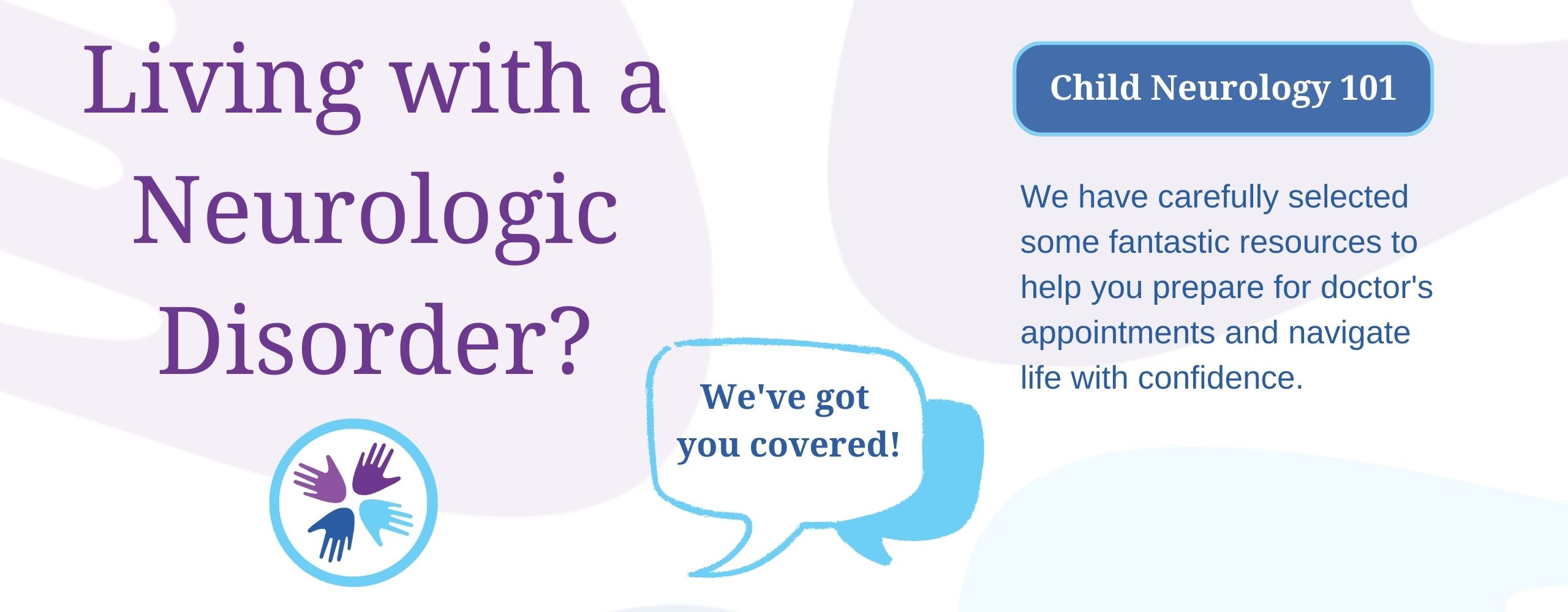
Authors: Dorottya B. Kacsoh, University of Central Florida College of Medicine
Alison L. Christy, MD, PhD, Providence Pediatric Neurology at St. Vincent Medical Center—Portland, Oregon
Reviewed: October 2023
SUMMARY
DEPDC5-related epilepsies are a diverse group of epilepsies. They are caused by a variation in the DEPDC5 gene. They typically run in families. The diagnosis is made by genetic testing. Most patients will need to take more than one anti-seizure medication.
JUMP TO
Disorder Overview
DESCRIPTION
There are many different epilepsy syndromes related to variants in DEPDC5. The most common is called familial focal epilepsy with variable foci (FFEVF). However, other types may occur.
In most of the associated conditions, seizures tend to be focal. This means they begin in one part of the brain. Most children have average intelligence. However, mild to severe intellectual disability is possible.
SIGNS AND SYMPTOMS
Familial Focal Epilepsy with Variable Foci (FFEVF)
A “focus” is an area in the brain where cells develop differently. This causes:
- Seizures
- Abnormal electrical activity
When cells in this area fire at the same time, a focal seizure can occur. (This used to be called a partial seizure. A focal seizure with impaired awareness used to be called a complex partial seizure.) Sometimes this seizure spreads to the rest of the brain. This is called secondary generalization.
Focal seizures are the main seizure type in FFEVF. Focal seizures can look different. It depends on which part of the brain is involved in the seizure.
The focus can be located in different areas of the brain in different family members who have FFEVF. This can cause different focal seizure types among family members. This occurs despite there being a variation in the same gene.
Seizures start anywhere from infancy to adulthood.
Sleep-Related Hypermotor Epilepsy (SHE)
SHE involves seizures that occur during sleep. These seizures typically occur:
- Right after falling asleep
- Just before waking up
These seizures start from the frontal lobe of the brain.
Patients are generally aware during these seizures. However, seizures may spread to affect the entire brain. When that happens, it can cause a loss of awareness. Less frequently, the person may also have seizures during the day.
Seizures typically start within the first two decades of life.
Infantile Spasms
A small group of infants may have infantile spasms.
Please see the infantile spasms page in our CNF directory for more information.
Autosomal Dominant Epilepsy with Auditory Features
Autosomal dominant epilepsy with auditory features is a rare disorder. It is associated with DEPDC5 variations. These seizures involve auditory symptoms. For example, the person may hear sounds like humming. Rarely, these seizures may involve hallucinations.
Sometimes, patients may have receptive aphasia during the seizure. This means that they are not able to understand language during the seizure.
Seizures typically begin in adolescence or early adulthood.
Familial Mesial Temporal Lobe Epilepsy
Focal Epilepsy Due to Structural Causes
About 20% of people with DEPDC5-related epilepsies have an area of focal cortical dysplasia (FCD). FCD refers to an area of disorganized cells. Seizures may begin in the area with the FCD. FCD can be seen on magnetic resonance imaging (MRI).
Children with FCD are more likely to have epilepsy that is difficult to control with medications. However, they may have fewer seizures or even none at all if the area of FCD is removed with epilepsy surgery.
CAUSES
DEPDC5-related epilepsies are caused by a variation in the DEPDC5 gene. This gene normally makes it harder for new cells to be created. In DEPDC5-related epilepsies, the variation causes too many cells to be present in certain areas of the brain.
DEPDC5-related epilepsies typically run in families. They are inherited in the autosomal dominant pattern. This means that only one variant copy of DEPDC5 needs to be present to cause epilepsy. However, some people can have the variant and not show symptoms. Males and females are equally affected.
LABORATORY INVESTIGATIONS
The following tests can help diagnose DEPDC5-related epilepsies:
Magnetic resonance imaging (MRI)
An MRI may show areas of focal cortical dysplasia (FCD). FCD is an area in the brain that has disorganized brain cells. The MRI may also show hemimegalencephaly. Hemimegalencephaly means one half of the brain is much larger than the other half. Other malformations are also common. However, the MRI may be normal.
Electroencephalogram (EEG)
TREATMENT AND THERAPIES
About 50% of patients have seizures that are not completely controlled with medications. Most patients will need multiple medications.
Some children have a single area of the brain that is causing seizures. This is also called a “focus.” These children may benefit from epilepsy surgery. Surgery may involve:
- Removing the focus that is causing seizures.
- Vagus nerve stimulation (VNS). A device is implanted under the skin. It is connected to the vagus nerve in the neck. The nerve is stimulated on and off, regardless of whether there is abnormal electrical activity in the brain.
- Responsive neurostimulation (RNS). Electrodes are placed directly into the focus in the brain. The device sits within the skull. The device will detect abnormal electrical activity and stop it before it becomes a seizure.
Even if a focus cannot be found, VNS therapy may still be beneficial. Please see the Surgery section on the Epilepsy page in our CNF directory for more information.
OUTLOOK
Children typically have average intelligence. Some may have mild intellectual disability. Children who have infantile spasms often have severe intellectual disability. Some children may have autism spectrum disorder or psychiatric disorders. For example, they may have ADHD, anxiety, or depression.
In some studies, DEPDC5 variants are found in up to 10% of cases of Sudden Unexpected Death in Epilepsy (SUDEP). This may be because seizures in DEPDC5 tend to occur at night and be resistant to medications. Please see the SUDEP page on our CNF website for more information
RELATED DISORDERS
Related disorders include:
- Familial focal epilepsy with variable foci (FFEVF)
- Sleep-related hypermotor epilepsy (SHE)
- Infantile spasms
- Autosomal dominant epilepsy with auditory features
- Familial mesial temporal lobe epilepsy
Resources
Epilepsy Leadership Council
The Epilepsy Leadership Council is made up of individuals representing organizations serving individuals with epilepsy and their families, as well as professionals, and governmental organizations. The mission is to develop and coordinate among its members shared projects that will have a positive impact on the lives of individuals with epilepsy, focusing on those areas where working together produces greater efficiency and impact than working independently.
For a list of more than 40 professional societies, patient advocacy organizations, and governmental agencies, please click here.
Pediatric Epilepsy Surgery Alliance
The Pediatric Epilepsy Surgery Alliance (formerly known as The Brain Recovery Project) enhances the lives of children who need neurosurgery to treat medication-resistant epilepsy. They empower families with research, support services, and impactful programs before, during, and after surgery. PESA’s programs include research-based, reliable information to help parents and caregivers understand when a child’s seizures are drug-resistant; the risks and dangers of seizures; the pros and cons of the various neurosurgeries to treat epilepsy; the medical, cognitive, and behavioral challenges a child may have throughout life; school, financial aid, and life care issues. PESA’s resources include a comprehensive website with downloadable guides, pre-recorded webinars, and virtual workshops; an informative YouTube channel with comprehensive information about epilepsy surgery and its effects; a private Facebook group (Education After Pediatric Epilepsy Surgery) with over 300 members; Power Hour (bi-monthly open forums and live virtual workshops on various topics); and free school training to help your child’s education team understand the impact of their epilepsy surgery in school. Their Peer Support Program will connect you with a parent who has been there. The Pediatric Epilepsy Surgery Alliance also hosts biennial family conferences and regional events that allow families to learn from experts, connect with other families, and form lifelong friendships. They also provide a travel scholarship of up to $1,000 to families in need to fund travel to a level 4 epilepsy center for a surgical evaluation.
In addition, PESA has resources for medical professionals to assist in helping clinicians help the parents of their patients find the resources they need after surgery. Educators and therapists will also find helpful resources and information, including videos, guides, and relevant research. Patients who have undergone surgery are encouraged to register with the Global Pediatric Epilepsy Surgery Registry to help set future research priorities.
Child Neurology Foundation (CNF) solicits resources from the community to be included on this webpage through an application process. CNF reserves the right to remove entities at any time if information is deemed inappropriate or inconsistent with the mission, vision, and values of CNF.
Research
Currently, there are no listings for DEPDC5-related epilepsy in ClinicalTrials.gov. Check back often and talk with your healthcare provider to identify upcoming trials.
If you have an interest in searching for any future trials that may be starting:
- Go to the Home page of ClinicalTrials.gov
- In the “Condition or disease” field, type “DEPDC5”. A drop-down list will appear if this disorder is included.
- You can narrow the search with the “Other terms”, “Intervention/Treatment”, and “Location” fields.
- Under “Study Status”, click on “Recruiting and not yet recruiting studies”.
- Click on “More Filters”, “Age”, “Child (birth – 17)”.
ClinicalTrials.gov is a database of privately and publicly funded clinical studies conducted around the world. This is a resource provided by the U.S. National Library of Medicine (NLM), which is an institute within the National Institutes of Health (NIH). Listing a study does not mean it has been evaluated by the U.S. Federal Government. Please read the NLM disclaimer for details.
Before participating in a study, you are encouraged to talk to your health care provider and learn about the risks and potential benefits.
For more information about participation in clinical trials, check out our education hub on the topic here.
References
Baulac S, Baldassari S. DEPDC5-Related Epilepsy. 2016 Sep 29 [updated 2023 Mar 9]. In: Adam MP, Mirzaa GM, Pagon RA, Wallace SE, Bean LJH, Gripp KW, Amemiya A, editors. GeneReviews® [Internet]. Seattle (WA): University of Washington, Seattle; 1993–2023. PMID: 27683934. Available from: https://www.ncbi.nlm.nih.gov/books/NBK385626/.
Carvill GL, Crompton DE, Regan BM, McMahon JM, Saykally J, Zemel M, Schneider AL, Dibbens L, Howell KB, Mandelstam S, Leventer RJ, Harvey AS, Mullen SA, Berkovic SF, Sullivan J, Scheffer IE, Mefford HC. Epileptic spasms are a feature of DEPDC5 mTORopathy. Neurol Genet. 2015 Jul 23;1(2):e17. https://doi.org/10.1212/NXG.0000000000000016. PMID: 27066554; PMCID: PMC4807908.
Dibbens LM, de Vries B, Donatello S, Heron SE, Hodgson BL, Chintawar S, Crompton DE, Hughes JN, Bellows ST, Klein KM, Callenbach PM, Corbett MA, Gardner AE, Kivity S, Iona X, Regan BM, Weller CM, Crimmins D, O’Brien TJ, Guerrero-López R, Mulley JC, Dubeau F, Licchetta L, Bisulli F, Cossette P, Thomas PQ, Gecz J, Serratosa J, Brouwer OF, Andermann F, Andermann E, van den Maagdenberg AM, Pandolfo M, Berkovic SF, Scheffer IE. Mutations in DEPDC5 cause familial focal epilepsy with variable foci. Nat Genet. 2013 May;45(5):546-51. https://doi.org/10.1038/ng.2599. Epub 2013 Mar 31. PMID: 23542697.
Samanta D. DEPDC5-related epilepsy: A comprehensive review. Epilepsy Behav. 2022 May;130:108678. https://doi.org/10.1016/j.yebeh.2022.108678. Epub 2022 Apr 14. PMID: 35429726.
The information in the CNF Child Neurology Disorder Directory is not intended to provide diagnosis, treatment, or medical advice and should not be considered a substitute for advice from a healthcare professional. Content provided is for informational purposes only. CNF is not responsible for actions taken based on the information included on this webpage. Please consult with a physician or other healthcare professional regarding any medical or health related diagnosis or treatment options.



